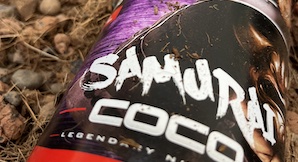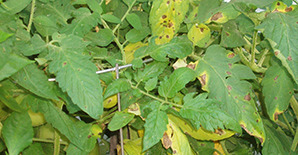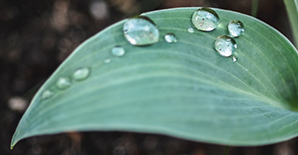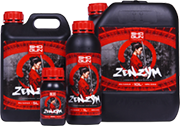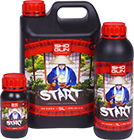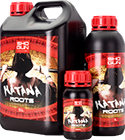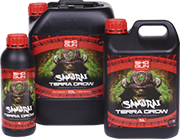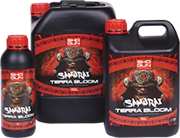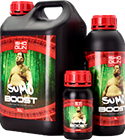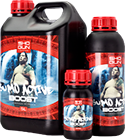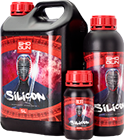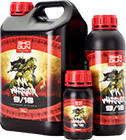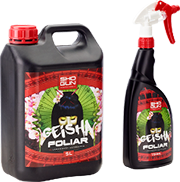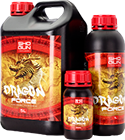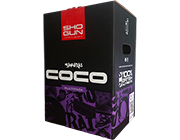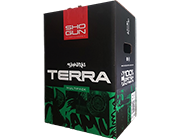5 Things You Need to Consider When Buying a Plant Flowering Booster
You’ve toiled away for months in your grow space and now it’s time for bloom. You stand back, ready to admire the results of your hard work, but something’s wrong. Where are the flowers? Oh dear, someone thought they could do without a flowering booster. No doubt you saw the row of boosters on the shelves of your local grow store or advertised online, and thought “do I really need another nutrient feed?” Well, looks like you did.
Even if your harvests are decent and you’re satisfied with your yields, there should always be that voice in your head asking “could it be even bigger?” Who wouldn’t like more flowers and heavier crops? Flower boosting products are proven to work, and every serious grower should have them in their armoury. But what makes a great booster, and which of the many products out there should be on your radar? Fortunately, we’ve done the hard research for you. So without further ado, here are the five factors you need to be aware of that make the perfect plant flowering booster.
1. NPK
One thing all fertilisers have in common is they contain the elements nitrogen (N), phosphorus (P), and potassium (K), and the particular balance of these three is crucial. This is significant because your plants’ needs will vary depending on the stage in their cycle. In the growth phase nitrogen is vital for your plants’ structure, metabolism, and chlorophyll production. But in the flowering phase phosphorus comes into its own. It’s the element that helps with plant respiration, energy transportation and flower formation. Potassium too firms up cell walls and aids the absorption of carbon dioxide, hydrogen and oxygen, and plays an important role in seed growth.
This is why Flowering Boosters, also known variously as Bud Boosters or Bloom Boosters, are so important if you’re serious about growing. Using a nitrogen-heavy fertiliser during the flowering phase will mean your plants will have wonderful foliage but no blooms. And if you don’t give what your rapidly growing plants need at the right time, sugar production is stunted, and your plants may not have the energy reserves required for flower development and density.
SHOGUN Tip: Sumo Boost or Sumo Active Boost have been shown to enhance nutrient absorption in your growing media, leading to dramatically improved growth and flower production, in addition to bolstering plant health and resistance to stress, pests and diseases.
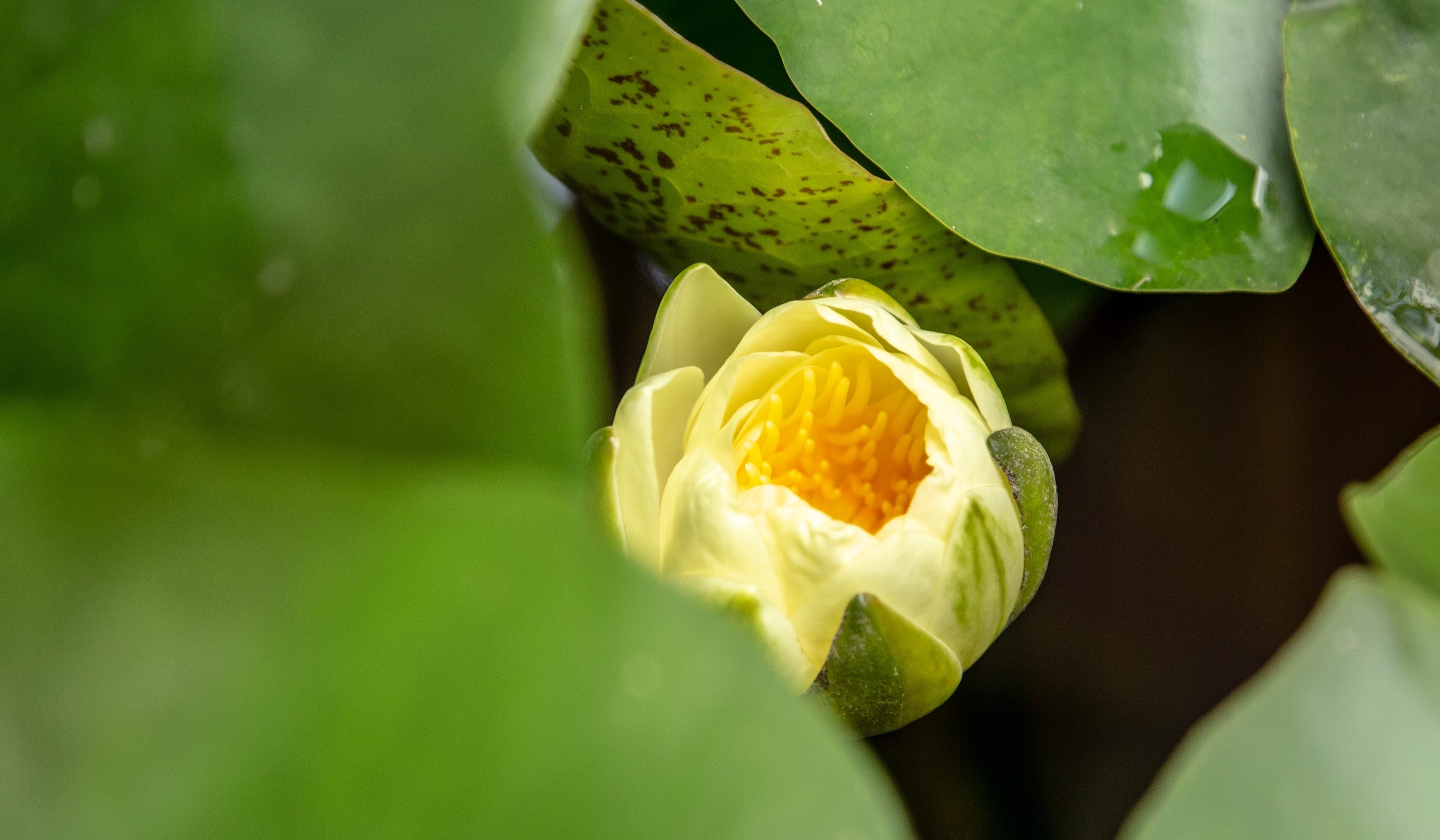
2. Timing
It might seem obvious but you don’t need a flowering booster when your plants aren’t ready to bloom. Not enough phosphorus during the flowering phase and you won’t see flowers, but too much phosphorus, especially in the growth phase, can be actively harmful. So to get the most out of your booster and achieve the best results, you need to find that sweet spot early in your plants’ flowering cycle, and it’s not always obvious when this has begun.
Generally, once you see small, bright green tendrils developing from your plant stems, this is a good sign to dust off your flowering booster. Add your booster to your reservoir – or watering can – as soon as you see the flowering cycle has started and continue to apply until harvest. And don’t forget to use it as a foliar application and spray your plant leaves. For best results give your leaves a spray at the start of the flowering cycle and then once again 28 days later.
SHOGUN Tip: Although flowering boosters can be used throughout the year in hydroponic systems, it’s important to give your plants time for growth. And if you’re growing outdoors stop using a booster once the weather cools.
3. Organic or Non-Organic
Like all fertilisers, flowering boosters are available in both organic and non-organic forms, and which you choose to go with depends usually on a combination of personal choice and your plants’ nutrient needs. Organic boosters provide nutrients as they break down in the growing medium, requiring microbial activity in the process, and for this reason are a slow release form of fertiliser. Non-organic boosters are water soluble and therefore quick release. They give the grower more control, as they’re not only fast-acting but contain a precise dose of nutrients, allowing you to give your plants what they need, when they need.
4. Biostimulants
Many boosters and other fertilisers contain biostimulants. These are microorganisms or materials that stimulate natural processes in plants to maximise nutrient use and provide greater stress tolerance. SHOGUN Sumo Active Boost, for example, contains one such compound called triacontanol, a substance found in plant wax, and it has been shown to provoke greater nutrient uptake, enhance photosynthesis, and stimulate the production of sugars, essential oils and proteins.
The use of biostimulants is a “no-brainer” as they activate cell division, leading to big increases in flower growth and secondary metabolites. Secondary metabolites help protect plants against stressors as well as improving flavours and aromas.

5. Too much of a good thing?
Finally, you need to know how to recognise the signs that your booster might be too potent for your crop. Too much phosphorus can cause plant burn, yellowing and withering leaves, and algae growth in your nutrient reservoir. For this reason we recommend using a recognised brand such as SHOGUN for your nutrient needs.
You should also consider the type of crop you’re growing; especially if you’re growing edibles. Bear this in mind particularly if you’re growing root vegetables – obviously flowering boosters direct energy to your plant leaves and flowers, not roots! And if you’re growing leafy edibles such as lettuce and kale, you need a higher nitrogen balance, as foliage is more important for your desired end-product than flowering.
SHOGUN Tip: Sumo Boost stimulates growth in underperforming or stressed crops. Sumo Active Boost has the same advantages of Sumo Boost but with the additional benefit of enhanced stability when used in hydroponics systems. Use in conjunction with SHOGUN PK Warrior 9/18 during flowering for optimum effect.
Flowering Boosters – an obvious buying decision
At any stage in the plant cycle it’s imperative that the grower keeps an eye on the balance of nutrients. There is no “one size fits all” fertiliser that perfectly meets the needs of your plants in both their growth AND flowering phases, so if you want rapid yields, heavier crops, better aroma and flavour; a flowering booster is an essential part of your toolkit.
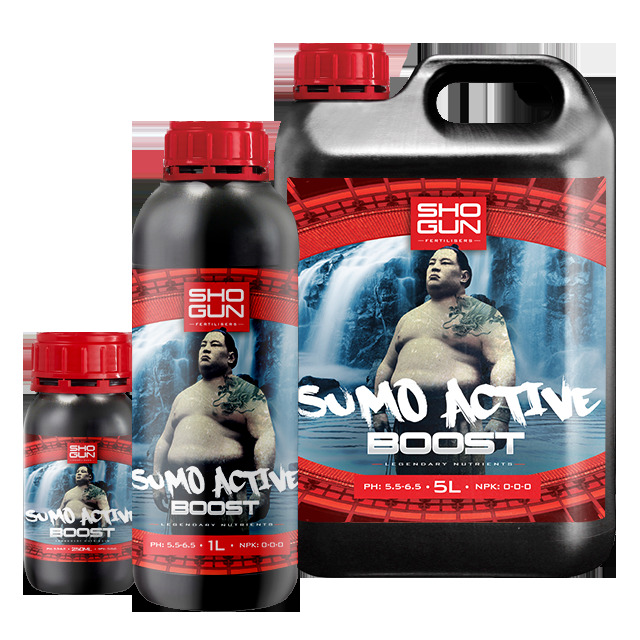
SHOGUN Sumo Active Boost
